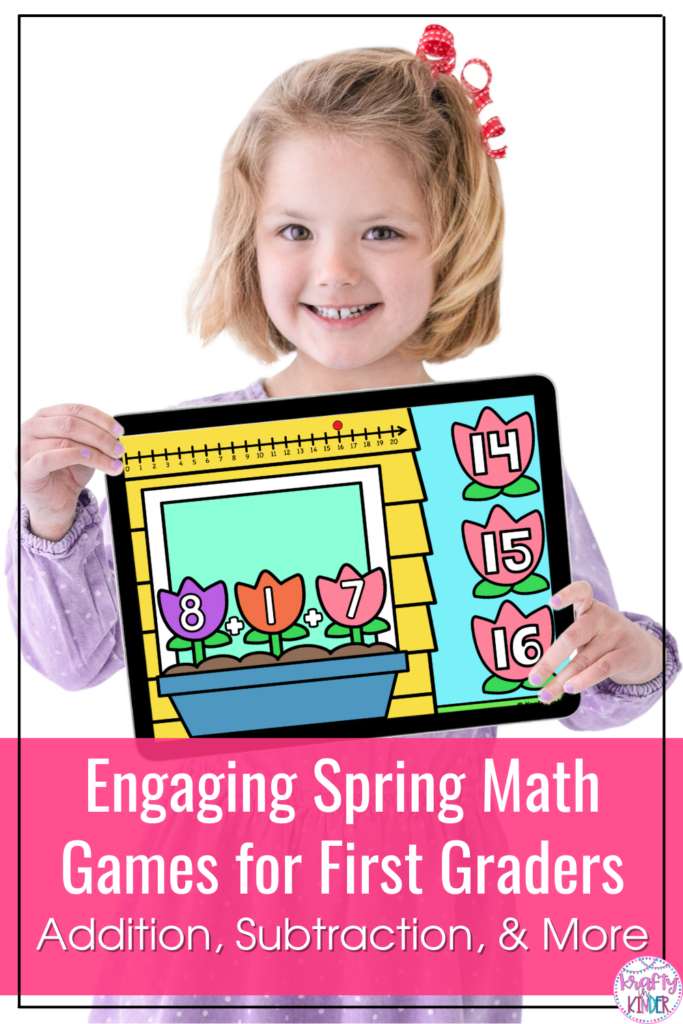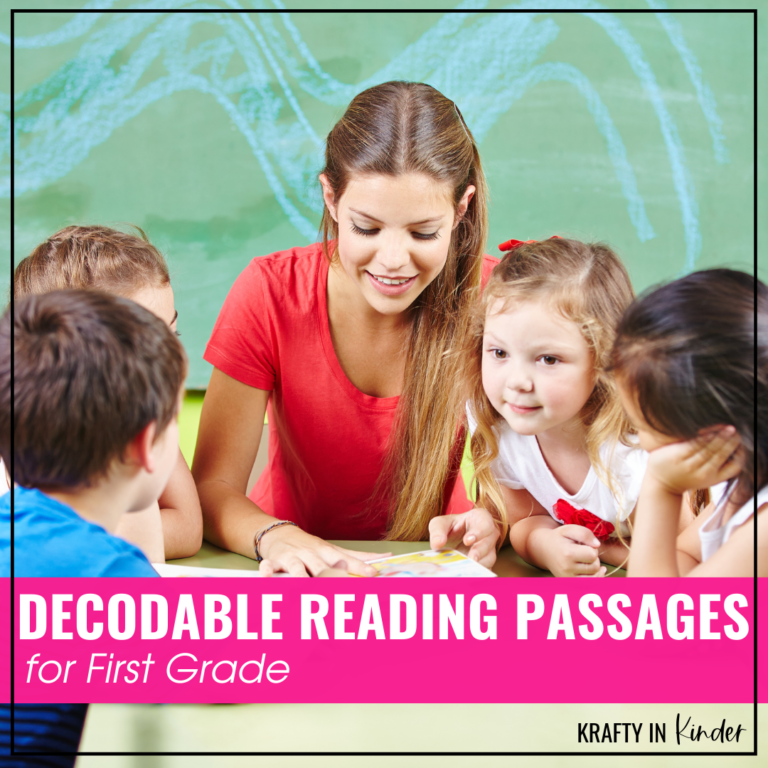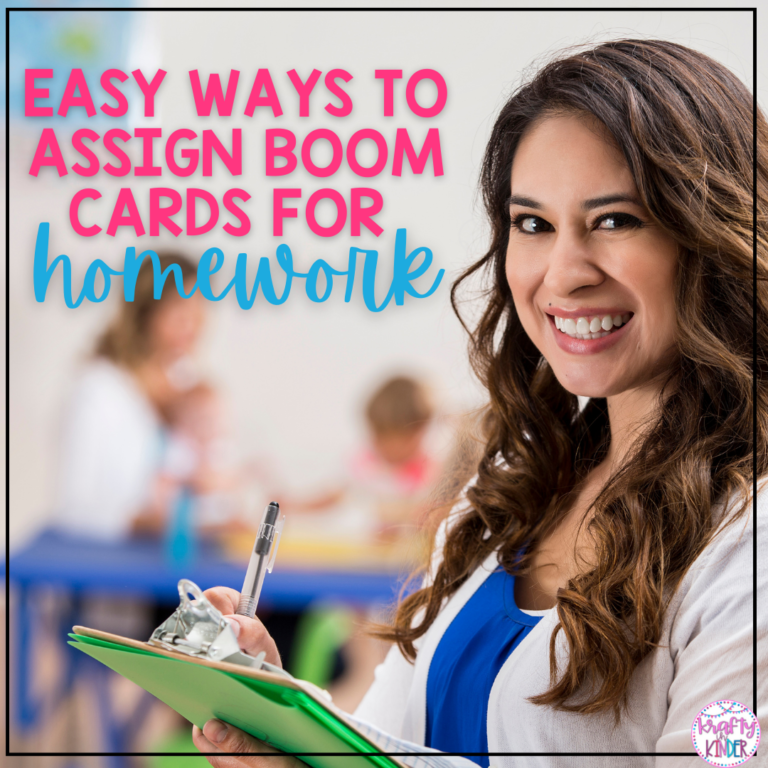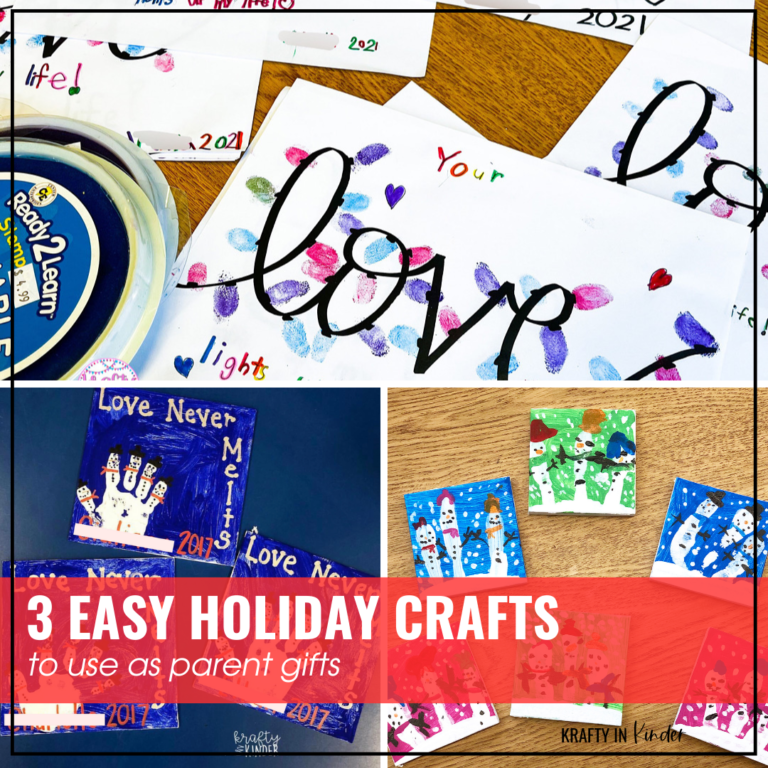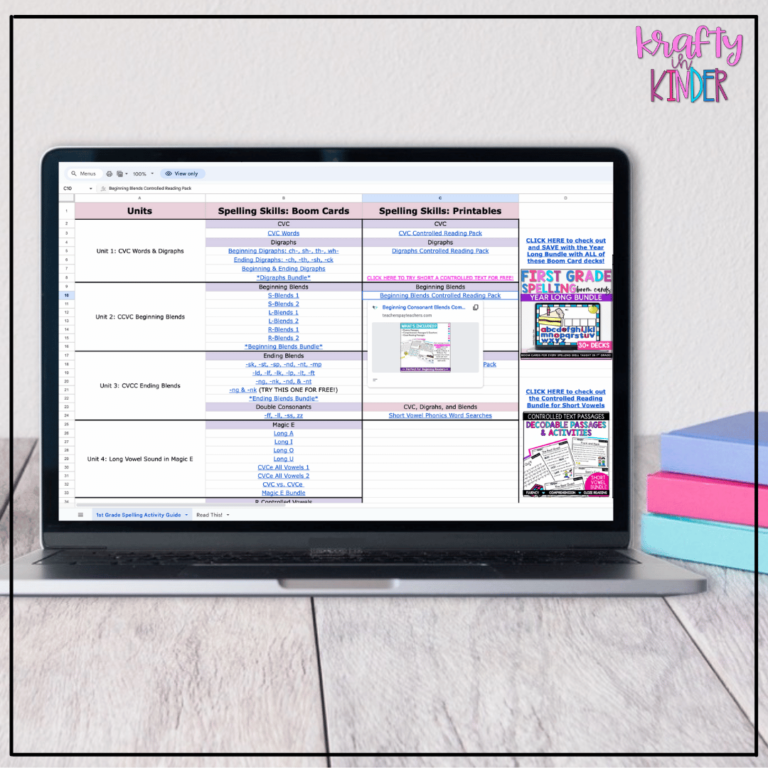Engaging Spring Math Games for First Graders
Ahhh spring… when the weather warms up and summer vacation is on the horizon, keeping your students engaged gets more challenging. Over the years, I’ve found this is especially true when it comes to math! Once the spring fever hits, it can be really tricky to capture student engagement as we work on practicing math facts day after day. Luckily, I’ve found a solution that not only captures attention but keeps it as we sail through the remainder of the year! Come along to see my favorite spring math games that guarantee engaged learning!
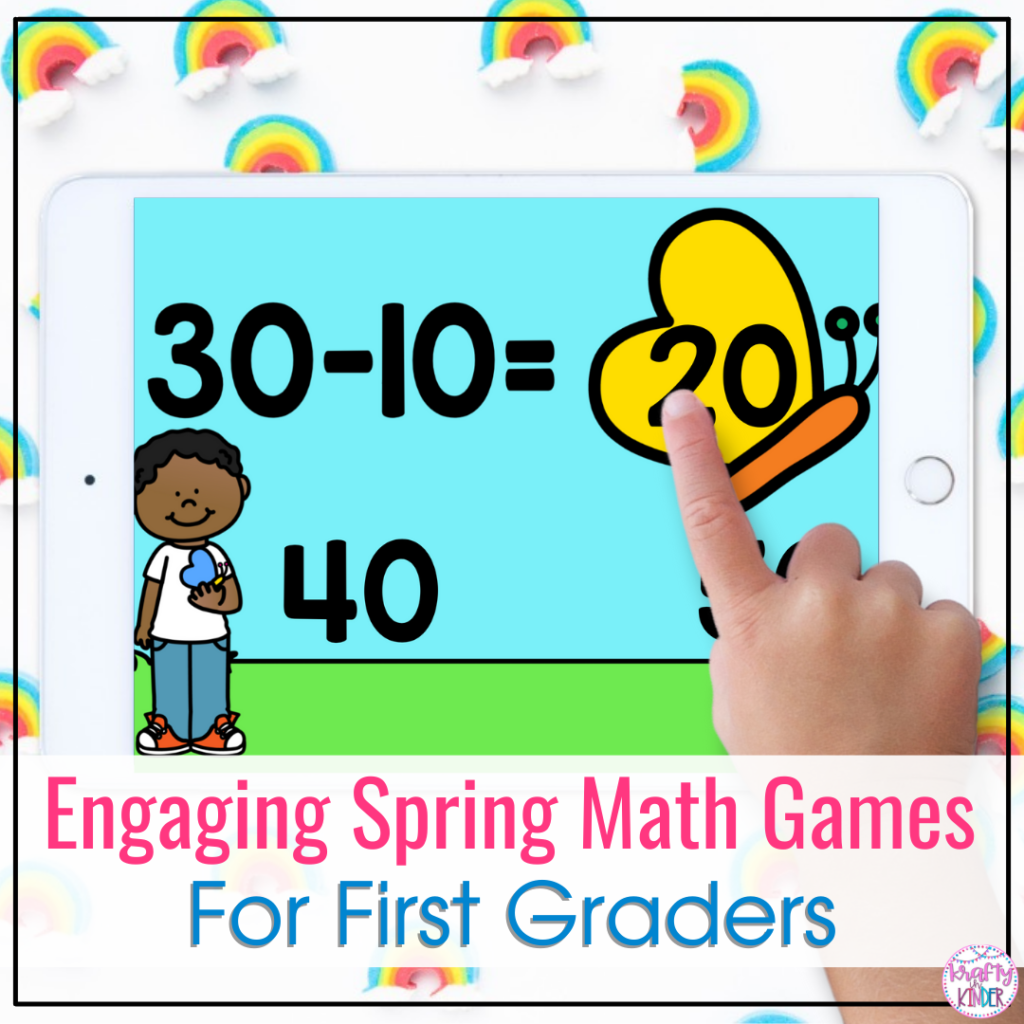
As a primary teacher, I notice year after year that the springtime is hard on student engagement. With the weather warming and summer vacation just around the corner, my students tend to be a little off-task. Can you relate? If so, I’ve got good news for you! Spring math games are here to level up your classroom learning.
Making Math Fun for Students
How do you feel about teaching math? Most of us have some pretty strong feelings, one way or the other when it comes to math. We all know that practicing math concepts throughout the year is essential for students’ growth. However, it’s not always easy, right? Whether students struggle with math concepts or they are exceptional mathematicians, math is one subject that can be a bit of a challenge to teach since students tend to “check out”. Math facts like addition and subtraction are easily learned and remembered through continual repetition, but repetition (like the use of flashcards) can be a pretty boring way to practice. So what’s the solution here? Math games for the win!
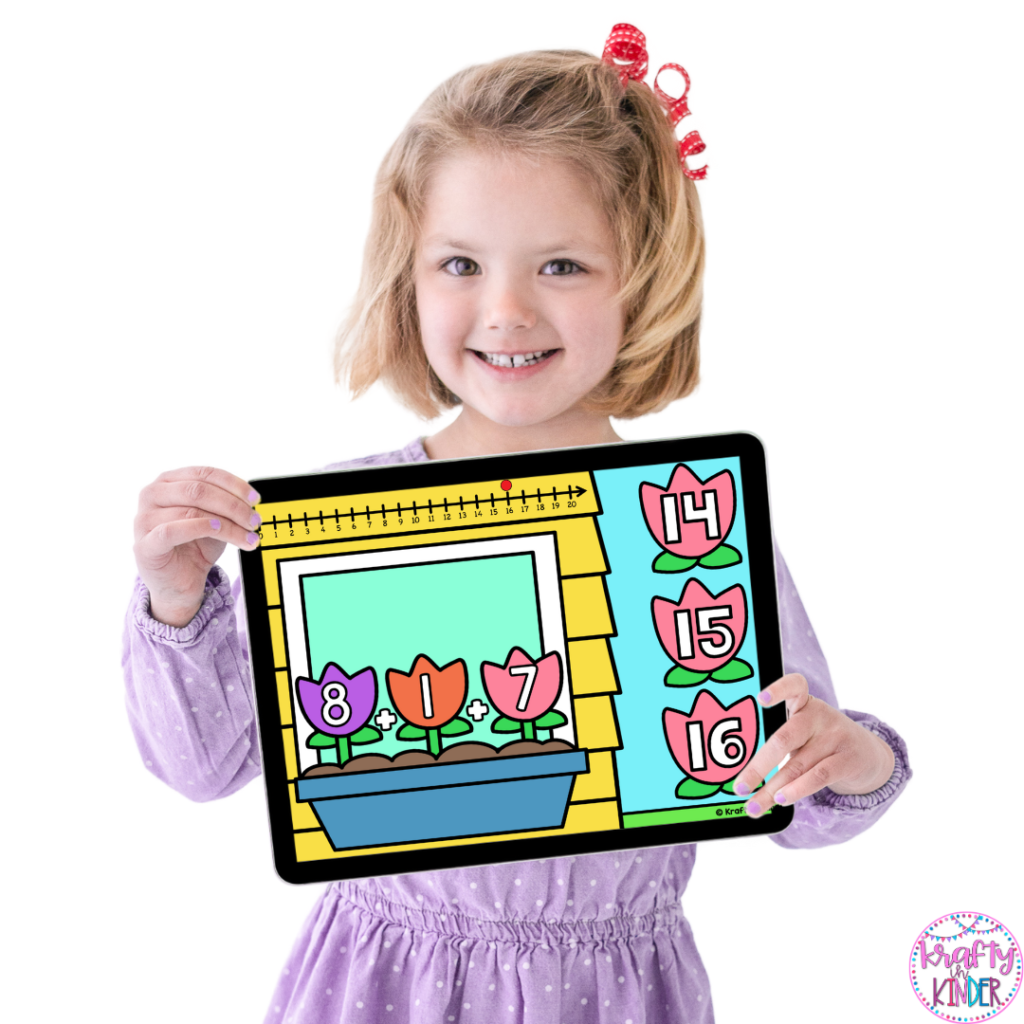
Everyone likes games right? In the primary world, games are a classroom hero that can take an otherwise boring activity like mastering math facts to a whole new level! Games ensure that your students will be engaged in the learning process without a fuss. In my classroom, I like to add math games into my whole group lessons, morning work bins, center activities, and even partner activities. While they are fun, they are the perfect addition to my educational toolkit too!
Games can be used as a way to practice new skills or as a “refresher” of previously taught concepts. I like to have games ready at a moment’s notice so that if my students are having an off day or halfway through my lesson, they just need a change of pace, they are already there and ready to use! And, if you choose the right types of games to focus on, you’ll have a TON of “grab and go” options to choose from! Let’s chat about my favorite no-prep, digital resource out there… Boom Cards!
Spring Math Boom Cards for The Win!
If you have no idea what Boom Cards are, I’m here to explain! They are digital task cards that offer engaging skill practice that your students will totally obsess over! Teaching young students proves to be difficult when playing games as reading answer keys or following the directions correctly can be hard for little ones. That’s one of the reasons I love Boom Learning! The task cards correct themselves and provide instant feedback to students. This way they know what mistakes they have made (if any) and can learn from their errors instead of just moving on.
Another reason to love Boom cards is because they are one of the most engaging resources I’ve ever used with my students. Kids love using technology and Boom cards feel like more like a video game than schoolwork, so they are always happy to practice their math skills. Along with being engaging, there are Boom cards out there for EVERY topic you could imagine! You can even differentiate them depending on your students’ needs as well. When using math Boom cards with my first graders, I like to cover topics like comparing numbers, addition, and subtraction. Below you will find more information on my favorite first grade Boom card spring math games!
1. Comparing Numbers Spring Math Games

First up is my Comparing 2 Digit Numbers deck. This deck is perfect for engaging your students in interactive number comparison practice. This self-checking math game includes a direction card with audio so that your students can listen to the directions before they begin. It was specifically made for beginning readers – like my first-grade students. I love this feature because it means my kiddos can use them independently, or with a partner during center time.
The background of each card is a beautiful spring day and a flower. The flower is where the greater than, less than, or equal sign will be moved to. To play, students will look at each number and decide which sign goes on the flower, between the numbers. Once your students solve it, they will move their answer symbol to the center of the flower and they will then receive immediate feedback. If they answer correctly, they will get a new card. If they answer incorrectly, they will get to try again.
There is a TON of comparison practice in this deck as it includes a total of 36 cards. Whether you use these cards during centers, independent practice, whole group learning on the SmartBoard, or even homework – this activity is a total math win!
2. Subtracting Tens

Help your students master the early skills of two-digit subtraction with this Subtracting Multiples of Ten deck! To get started there is an audio card with instructions that your students can listen to as many times as needed to learn how to play. This feature helps to make first graders feel empowered, independent, and in control of their learning. Plus, it makes it super simple to assign these to kiddos who aren’t quite ready to read directions on their own yet!
To play, students will read the equation and select an answer at the bottom of the card. Then, they will drag and drop their answer onto the butterfly wings on the card. They will receive immediate feedback and get the chance to try again if they answered incorrectly.
Do you have a few minutes to spare after lining up? Maybe you want to incorporate a quick and fun assessment for students as they go to get their coats for recess. Whatever the case, if you have a few minutes to spare, you can easily pop these cards up on the interactive whiteboard and have your students solve the equations. No matter how you choose to use this deck, it is sure to bring joy to your students!
3. Addition and Subtraction Spring Math Games
Another amazing Boom card deck is my Addition and Subtraction set. This set covers the all-important skills of adding and subtracting within 20 – another essential skill for first graders.

This resource features 31 self-checking cards with audio directions and drag-and-drop features. These decks can be used in a variety of ways including centers, partner games, whole group learning, independent workstations, and even no-prep homework assignments.
I love this set of Boom cards because they support your students’ fact fluency skills in a fun way! To play, students will read the equation and select an answer to submit. Clicking on an answer butterfly will result in your students moving to the next card (correct answer) or getting immediate feedback and the option to try again (wrong answer).
I love that these cards focus on both addition and subtraction. Since both skills are practiced, this makes students slow down and look carefully at the operation sign before answering. We all know that kiddos tend to speed through work! I love opportunities that slow them down and focus on attention to detail. These decks also include a number line to assist with solving the equations for those who need it – making it a wonderful resource for students of all skill abilities!
4. Adding Three Numbers

Along with addition and subtraction fluency, first-grade students need to practice adding 3 numbers together. This set of Boom task cards does just that! Each task card gives your students three numbers (up to 10) to add together. Once, your student has decided what the answer is, they will click on the tulip with the correct answer. These cards also provide your students with a number line from 0 to 20 for additional support and visual help.
Adding three numbers is an important skill that supports your students’ learning and development moving forward. This deck gives your students 35 different cards making it an effective way of practicing this skill. Another amazing feature of this deck is that your first graders can do it completely free of any outside help. Audio directions make it easy for them to get started and each task card is self-correcting. This gives your students the freedom to make mistakes and get mathematically messy, while also receiving feedback if they need to adjust their answer!
Love Boom Card Games and Want Even More?
Have you loved Boom cards for a while now? Or maybe you have found a new love for these digital task cards. Either way, if you’re looking for more spring learning fun, I’ve got you covered! Adding Boom cards focused on literacy skills to your teaching toolkit will keep your students engaged in learning even when spring fever hits! Be sure to check out my Spring Math and Literacy Centers Bundle if you’re looking for some game ideas.

Inside the bundle, you’ll find all of the math decks mentioned above along with three literacy decks too! There are games for parts of speech, R-controlled vowels, and a fun color-by-sight word option. With a variety of games for first-grade math and literacy, you’ll have plenty of options to keep your students engaged and practicing all the way to summer break.
Have Questions About Boom Cards?
If you’re looking for more information on Boom Cards and how to use them, be sure to check out the posts below!
- A Guide for Boom Cards for Parents – Everything You Need to Know
- Differentiation in the Classroom Using Boom Cards
- What are Boom Cards and Frequently Asked Questions on How to Use Them
- 5 Easy Ways to Use Boom Cards in First Grade
Save This Spring Math Games Post
Make sure to pin this post on your favorite Pinterest board so you’ll be able to find these spring math games when spring fever hits your classroom!
